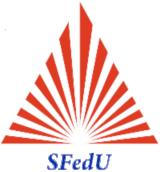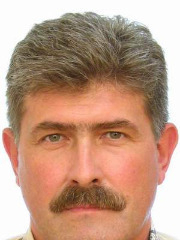Igor Vladimirovich Malyshev
Research interests:
Physics processes in solid-state devices microwave and EHF ranges, and the interaction of electromagnetic fields with natural and artificial dispersed media with chiral properties.
Research projects:
Educational project "bioinformatic aspects of the interaction of electromagnetic millimeter waves and disperse media".
Teaching:
-
Pulse and digital devices
Discipline consists of three modules ("Work of electronic devices in key mode", "Relaxation oscillators and pulse Generators of different shape") and includes the following main topics:
Module 1: the Calculation parameters of the keys on the BT, PT and OC and improve their performance. Oscillations with a pulse strength modulation (ISB). The spectral characteristics of the IMC. Chain of the first order in a pulsed mode. The operation of nonlinear elements in the switching devices. Pulse modulators. Amplifiers class "D". The use of Oh in a pulsed mode and in the mode comparatii.
Module 2: Calculations, transistor blocking oscillator, a blocking-generator (BG)of op-amp, multivibrators on BT, MDPT in the oscillatory and standby, multivibrators op-amp in the oscillatory and waiting for re-presses. The calculation of the amplifier-shaper short pulses. The calculation of circuits in ECL TTL-type , I2L-type, CMOS type with load. Calculations digital single vibrators and multivibrators on BLAIS.
Module 3: Practical application of BG in the application and home appliances. Practical schematic of the fan Castronovo and amplifiers - shapers of short pulses. CLAYS on the basis of analog and digital components into standby and the oscillatory modes. The use of modern application software (MicroCAP, MathLAB, Multisim...) for the calculation and analysis of pulse-digital devices.
-
Microwave circuit design
Discipline consists of three modules ("basic Circuitry of nonlinear electric circuits", "Basic device of modern microelectronics part 1" and "Basic device of modern microelectronics part 2") and contains the following main topics:
Module 1: the Transformation spectrum. Spectra of a sequence of pulses of different shapes.The use of MathCad for spectral analysis of pulse-modulated signals. Frequency and phase response of UMK. The criteria of sustainability. Amplitude-modulated oscillations of simple signals. Fluctuations in angle modulation.
Module 2: Classification of signals. The parameters of nonlinear resistive elements. Non-linear capacitive elements. Oscillations, General information. Switching circuits and operational amplifiers. Load effect on the processes of frequency conversion. The quadratic detector. The Converter of frequency on ne. The range of current. Synchronous detection on the parametric element.
Module 3: Characteristics and parameters of amplifiers. The frequency multiplication. The symmetric excitation. The detector of AM oscillations. The case of unmodulated oscillations. The detector characteristics. Differential amplifier. Balanced modulation. Parametric amplification of the oscillations. Main characteristics and parameters of converters of frequency.
-
Technical electrodynamics
Discipline consists of two modules ("Electrostatics", "Electrodynamics") and contains the following main topics:
Module 1: the Operators of electrodynamics in orthogonal coordinate systems. Integrating method in problems of electrodynamics. The study of EMF has symmetry. The energetic characteristics of EMF.
Module 2: plane waves in material media. Reflection and refraction of a plane electromagnetic effects'. Apparatus potentials in solving the problems of electrodynamics. The elementary radiators of electromagnetic waves. Waves in dispersive media.
-
Quantum mechanics and statistical physics.
Discipline consists of two modules (basics of quantum mechanics, Schrodinger equation and quantum statistics) and contains the following main topics:
1. Energy and momentum of light quanta, the law of conservation of energy and momentum. The external photoelectric effect, its explanation by Einstein. Experience Comton scattering of x-rays, parallelogram Compton. Energy transitions, radiationless transitions. Spectral line width, natural width, Doppler broadening, broadening due to the effect of electric and magnetic fields. The broadening due to collisions. De Broglie waves, the determination of the phase velocity. Group communication and mechanical speeds. A fundamental property of dispersion. Experience Davisson and Germer (scattering beam slectronic on chip), the experience of stern and Esterman (reflection and H2 FROM LiF crystals) ; .proof volnovykh properties of micro-particles. The average time and average statistics. The probability of random events. Maxwell's distribution. The description of the microcosm must be probabilistic. The main difference between the descriptions of state in classical mechanics and in quantum mechanics: position and momentum vs wave function. Operator equation, the concept of eigenfunctions. Completeness of system of eigenfunctions, orthogonality of eigenfunctions.
2. The concept of the operator, the operator coordinates the momentum operator in quantum mechanics. Angular momentum, the transition to the operator of square of angular momentum. The concept of commuting operators. The kinetic energy operator, the Hamiltonian. The operator Schrodinger equation. The essence of the stationary States. The essence of the system in the stationary state with electric point of view. The dependence of the potential energy in a field of Central forces. Schrodinger equation for stationary States, solution of the equation. The definition of potential energy. Solutions in the form of a superposition of converging and diverging spherical waves and periodicheski orbits. Energy spectrum for E > 0 and E < 0. The essence of the Zeeman effect, the reason for the splitting of spectral lines of crystals in a magnetic field. Simple and complex effects szeemann, the account of spin-orbit interaction. Multiplier Lange (g-factor). The principle of identity of particles. The operator shifts eigenfunctions of the operator of the permutation. Particles, Bose and Fermi, Pauli's exclusion principle. The formula for the canonical Gibbs distribution, the essence of this formula. The dependence of the Gibbs functions of the coordinates and momenta of its contrast to the Boltzmann distribution. The type of distribution Bose ; Einstein, applicability, and unlike the Fermi ; Dirac.
-
The influence of EMI on biological structures and living organisms
Ranges EMI and peculiarities of their distribution in living tissues. The types and properties of radioactive radiation. Dosimetry of radiation. Natural radioactive background of the Earth.The types of physical fields and their sources.Low frequency electric and magnetic fields and their effects on living organisms.Electromagnetic wave of microwave range and their impact on biological structures.The influence of the intensity of RF and microwave effects on living organisms and the main effects observed in this case.The basics of biological effects of microwave radiation. Electromagnetic radiation in medicine. UHF waves in biology.Maximum permissible levels of EMI for the person , methods of measurement and protection .Changes in the structure of blood when exposed to HF, SHF and EHF EMI . Dependence of the EMI effect on metabolism .The effect of EMI on the immunobiological properties of the organism.The etiology and pathogenesis of functional and pathological changes under the influence of AMY.The use of microwave technologies in national economy. Mechanisms of biological effects in the body when exposed to EMI. Hyperthermia. Methods of diagnosis and treatment of human diseases.



